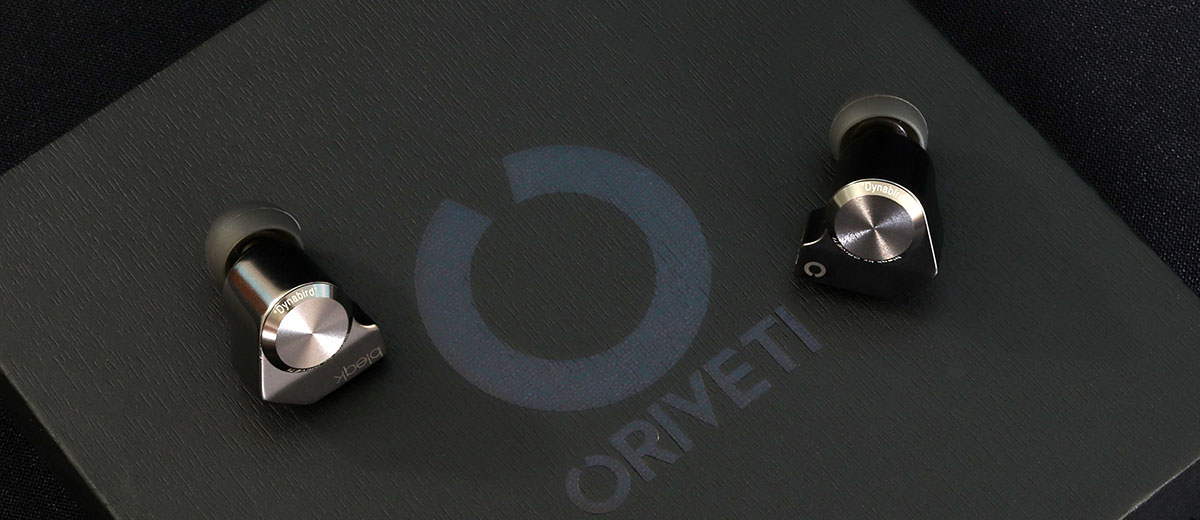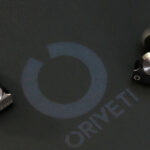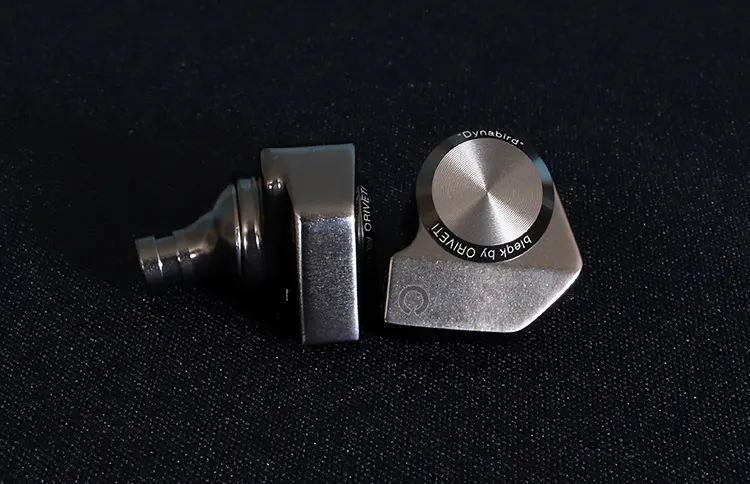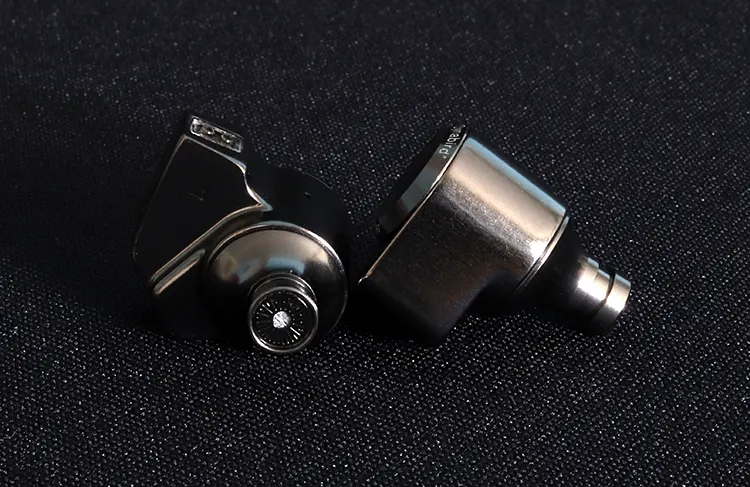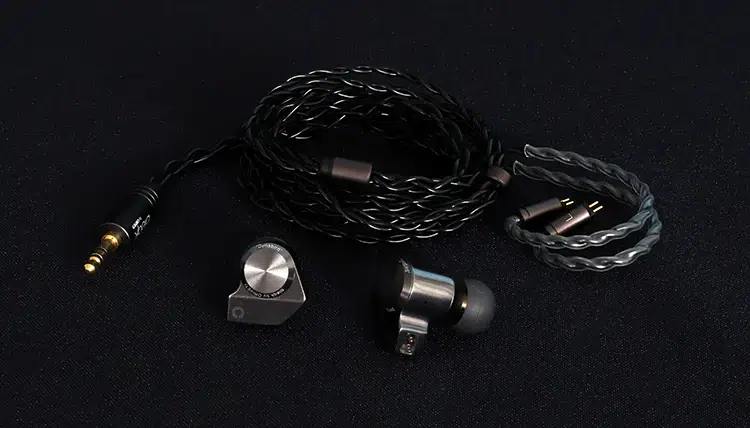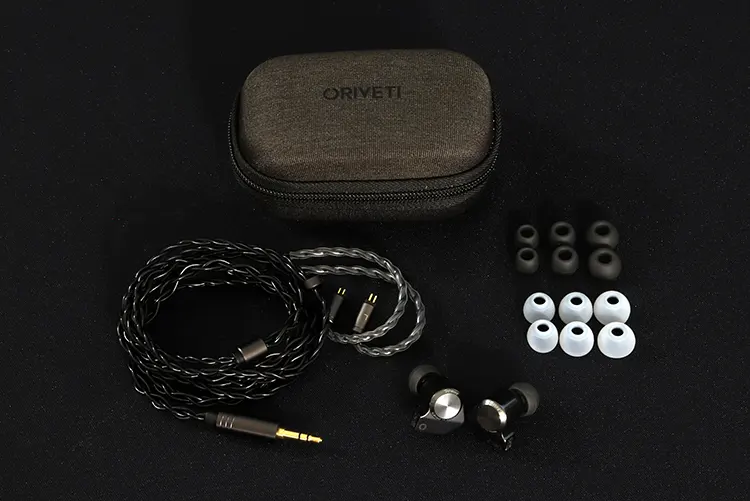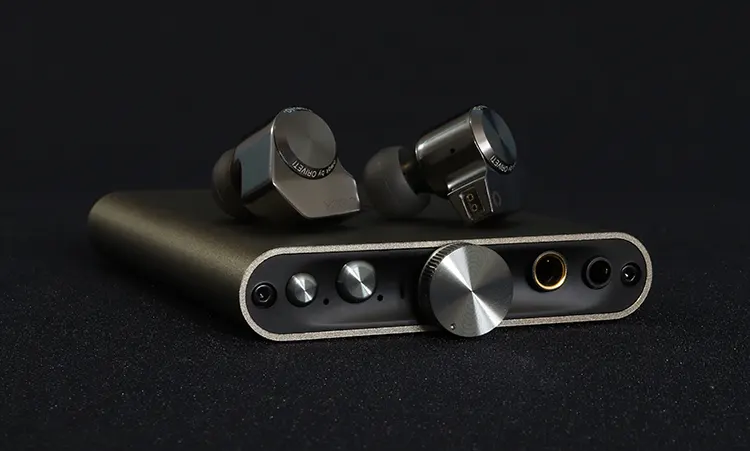Today, Louis reviews the ORIVETI bleqk Dynabird, an affordable beryllium-coated 9.2mm dynamic driver universal in-ear monitor priced at $99.99.
Disclaimer: This sample was sent to me in exchange for my honest opinion. Headfonics is an independent website with no affiliate links or partnerships. I thank the team at ORIVETI for their support.
Click here to read more about the ORIVETI products previously reviewed on Headfonics.
This assessment follows our current scoring guidelines, which you can read in more detail here.
We recently covered the budget-priced ORIVETI bleqk Lowmaster, and as promised, in this review, we will cover the second IEM in the bleqk IEM lineup called the Dynabird.
Now, to be honest, I don’t see any resemblance between these two IEMs and do not see any common traits here.
In other words, no one would ever guess these two bleqk models are from the same line by looks alone. The Dynabird is a 180-degree veer from its brother, the Lowmaster.
The Dynabird took a different route from the Lowmaster in that it uses a single dynamic driver mounted within a metal body. The only common traits they share are the cable, cable connection type, and the accessories package.
Features
ORIVETI designed the bleqk Dynabird to employ a minimalist design, to have low mass and a high comfort level, and use advanced manufacturing techniques to obtain their goals. They even designed the driver from the ground up.
The driver is the main attraction within the bleqk Dynabird. It’s a custom 9.8mm composite dynamic driver with a coating of Beryllium to add rigidity to the driver. This driver has an SPL of 105+ -3dB/ mW @1kHz with an impedance of 16Ω.
This driver uses a dual-chamber system that, according to ORIVET, plays a large part in the driver tuning, along with an elaborate output nozzle filter. These implementations helped ORIVETI precisely tune the driver and optimize the end product output to ORIVETI’s standards.
Design
Instead of using a common mold and a resin shell, ORIVETI employed a geometric design similar to their OD100 IEM. These shells are made from precision-crafted Aluminum but went even further in complexity on this model compared to the OD100.
These lightweight, CNC-shaped shells display intricacies like the bleqk branding, ORIVETI branding, and the Dynabird name etched on the edges of the end caps.
They have a dark hue and a sheen that resembles Titanium over a traditional silver-colored Aluminum. This gives them a modern look.
Their electrical connection is accomplished by a 0.78mm dual-pin connection. I only wished the electrical connector was countersunk into the body further, although in its present form, it seems solid.
Comfort & Isolation
The ORIVETI bleqk Dynabird shells are small and comfortable. They’re lightweight and are easy to insert and an easy-to-wear IEM, but they are not the best at isolation. They do an average of around 20 decibels or perhaps a couple of numbers, plus or minus if my senses are correct.
They’re more effective with distant sounds, even some produced at high levels of intensity, but not nearby sounds. It seems like sounds must be above a certain volume intensity or close in proximity to get through.
At times and in certain situations, I prefer this amount of isolation because it strikes a good balance and attenuates outside noise to a tolerable level while simultaneously supplying the right amount of nearby ambient awareness.
Ear Tips
I’m not going to complain as much as I did with the Lowmaster about the amount of tips included with the Dynabird because of the lower price tag. They both come with the same set of tips.
My surprise was finding out how insensitive this set is to ear tip selection, and that is another reason I’m not complaining. These work with most tips I tried with very few negative sonic effects.
I used all the included tips that fit my ear, some of my favorite aftermarket tips, and whichever ones I had in my box of tips, and they all worked well. All you have to worry about is choosing a tip set with a good fit and seal.
Stock Cable
I’m guessing that if ORIVETI releases other bleqk IEM models in the future, it’s going to include this cable because it carries the bleqk branding, and this cable is the same cable that comes with the Lowmaster.
The hardware, the 3.5mm plug, and the two .78mm connectors are all metal and anodized, and all the connectors are gold-plated. The chinstrap piece and adjustment piece are also metal and color-keyed.
The cable is a four-wire braid, and each wire is rubber-coated as an insulator. What I’m not certain about is the strand count or what type of wire is being used.
The cable assembly does feel a bit tacky because of the rubber insulation, but then again, that can be advantageous. It seems to quell cable friction noise well.
Packaging & Accessories
The Dynabird comes packaged exactly like the Lowmaster and comes with the same accessories. Again, I remind you that the Dynabird IEMs are at a lower price tier, and I’m not complaining.
They come with 7 ear tip sets, but there are only three types of tips to choose from. You get the bleqk cable assembly and a decent carrying case but no literature.
The case is a zippered two-section semi-hard case that is cloth-covered and includes two individual pockets inside where you can put the IEMs.
This aids in the avoidance of accidentally dropping the IEMs when you open the case, although they seem to be able to withstand a drop from a 10-foot window.
Sound Impressions
I tested the Dynabird IEMs with the FiiO M11 Pro DAP on music mode for a neutral frequency response perspective and the iFi audio’s hip-dac 3 with XBass engaged to obtain a colored, fun, musical perspective.
I also used the ONIX Alpha XI1 on a Motorola Edge. I also tested the Dynabird IEMs with the SMSL D10, Shanling’s H2, and Ibasso’s DC06. The list is composed of the same gear that was used to test the Lowmaster.
Summary
The ORIVETI Bleqk Dynabird IEMs deliver a punchy and dynamic sonic signature with well-extended bass, clear but forward midrange, and a treble response that is polite and easy on the ears.
They’re well-suited for listeners who are looking for a vibrant, forward, and full-bodied presentation.
I would say their best character lies within the midrange bands, and the Dynabird is also a good candidate for those who are looking for an IEM that performs well on vocal tracks and that produces a proper representation of acoustic instruments.
Bass
The bleqk Dynabird IEMs produce low-end that is notably powerful, with notable sub-bass frequencies that deliver a deep and resonant rumble.
They deliver deep, well-extended bass that is produced with decent impact. They remain well-behaved; they also avoid an overpowering of all the other frequencies.
Bass frequencies are produced with a nice amount of rumble without bleeding into the midrange. The bass response is their second-best characteristic because they supply an ample amount of speed, depth, and energy behind each bass note.
While the bass is impactful, it maintains a level of control that prevents it from overwhelming the overall sonic panorama. However, some listeners might find the bass response slightly heavy on bass-heavy tracks, but I like that personally.
Midrange
The midrange is a bit forward but smooth, making vocals and instruments sound well-defined and in balance with the rest of the spectrum.
The tonality is what I call realistic. They do produce a sonic characteristic that is a touch warm, which promotes a musical character.
The midrange maintains clarity, allowing for a detailed vocal section that avoids sounding muffled or distant. The midrange vocals, in particular, are produced with a natural timbre.
However, there is a small peak at 3k that makes things go into the shriek category at higher volume levels. But that can be equalized once you reduce that area of the frequency response. Sonics become improved and veer from being shrill or fatiguing.
Treble
The one area that perhaps can receive some criticism is the high-frequency area of the spectrum. The treble region is tuned to be energetic and crisp, mostly around 10 kHz, adding brightness and detail to the sound. But the overall experience can sound like an old horn-loaded speaker with a 15k limit.
If you look at the ORIVETI-supplied graph, you’ll notice a high peak at around 10k, then a sudden drop with another smaller peak somewhere around 15k.
I’m pointing out these frequencies not only because I heard these characteristics running a tone generator sweep, but they’re visible on the graph as well.
The high frequencies lack extension, and I did break these in for 80 hours on a bench rig before listening tests. The treble can occasionally exhibit a slight sizzle, especially on tracks with prominent high-frequency content.
But on tracks that are not demanding or dependent on high-frequency extension, they do just fine by producing highs that strike a balance between sparkle and smoothness. They offer good highs without sibilance, making high frequencies sound crisp but not fatiguing.
Staging & Dynamics
One other area that the bleqk Dynabird IEMs shine in is dynamics and how fast attacks and delays occur. You’re always greeted with a snappy, fast, lively, and potent presentation, even when low-powered gear is used.
The Dynabird IEMs do not produce an ultra-wide stage, but an interesting one in that it focuses most of the energy between ear level and also produces lots of height; plus, some depth can also be perceived. They
The soundstage size of the Dynabird is moderately wide, providing a sense of space that extends not too far from the listener’s head. Imaging is precise, allowing for the accurate placement of instruments and vocals within the sound field.
Click on page 2 below for my recommended pairings and selected comparisons.

